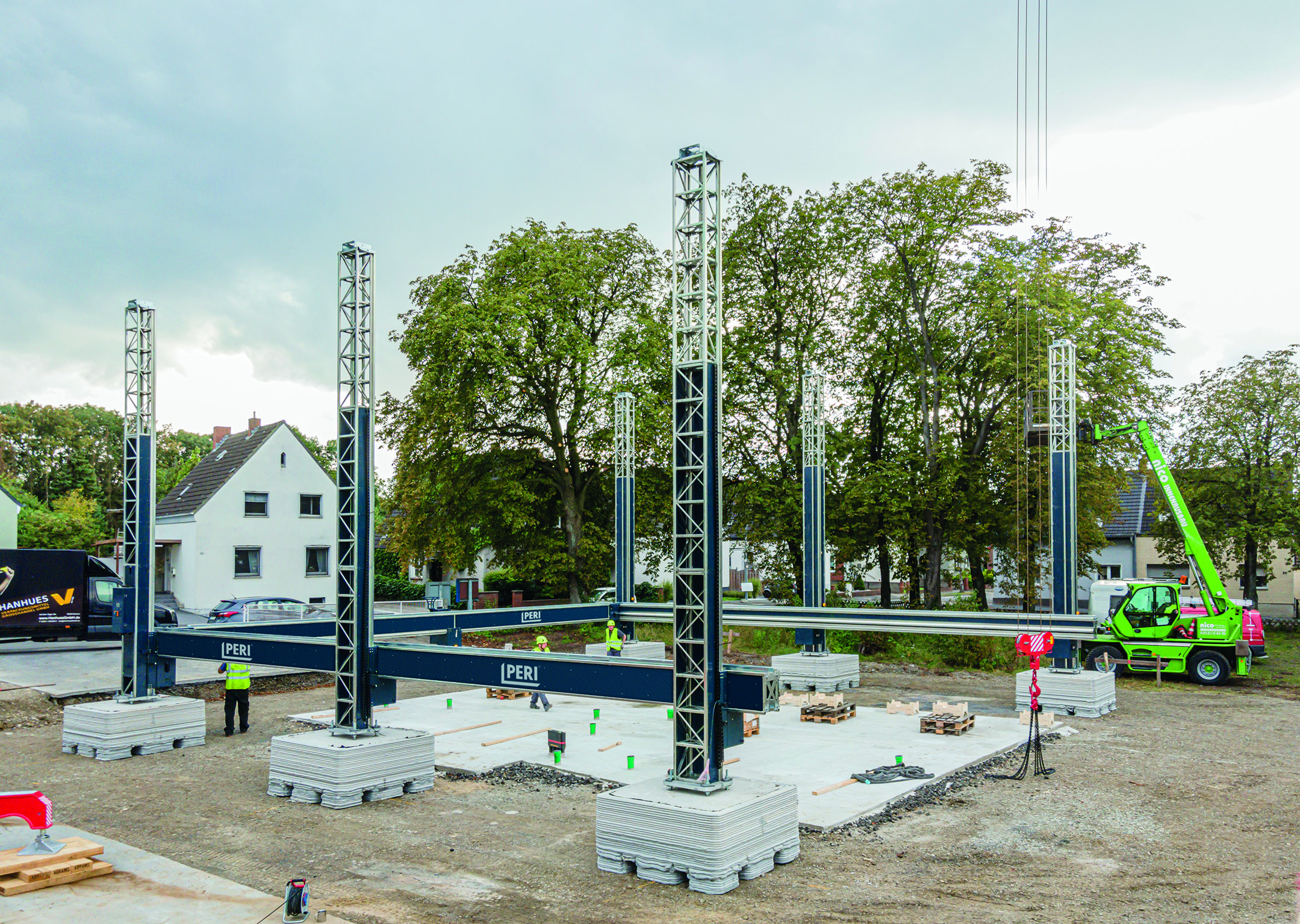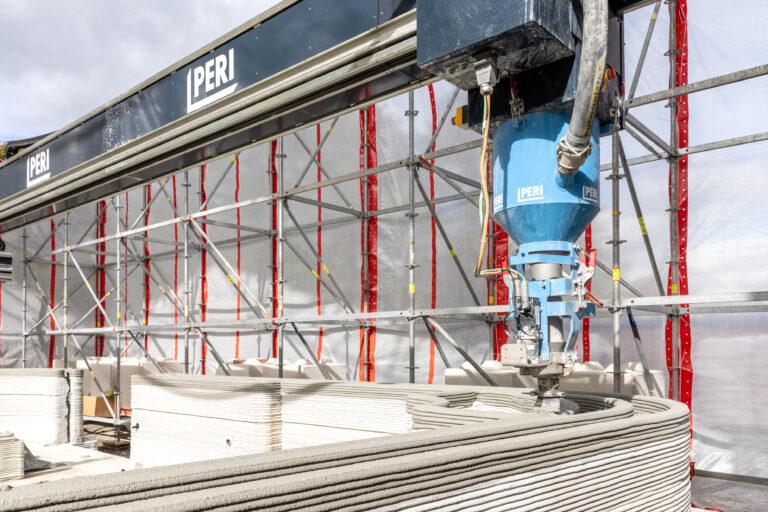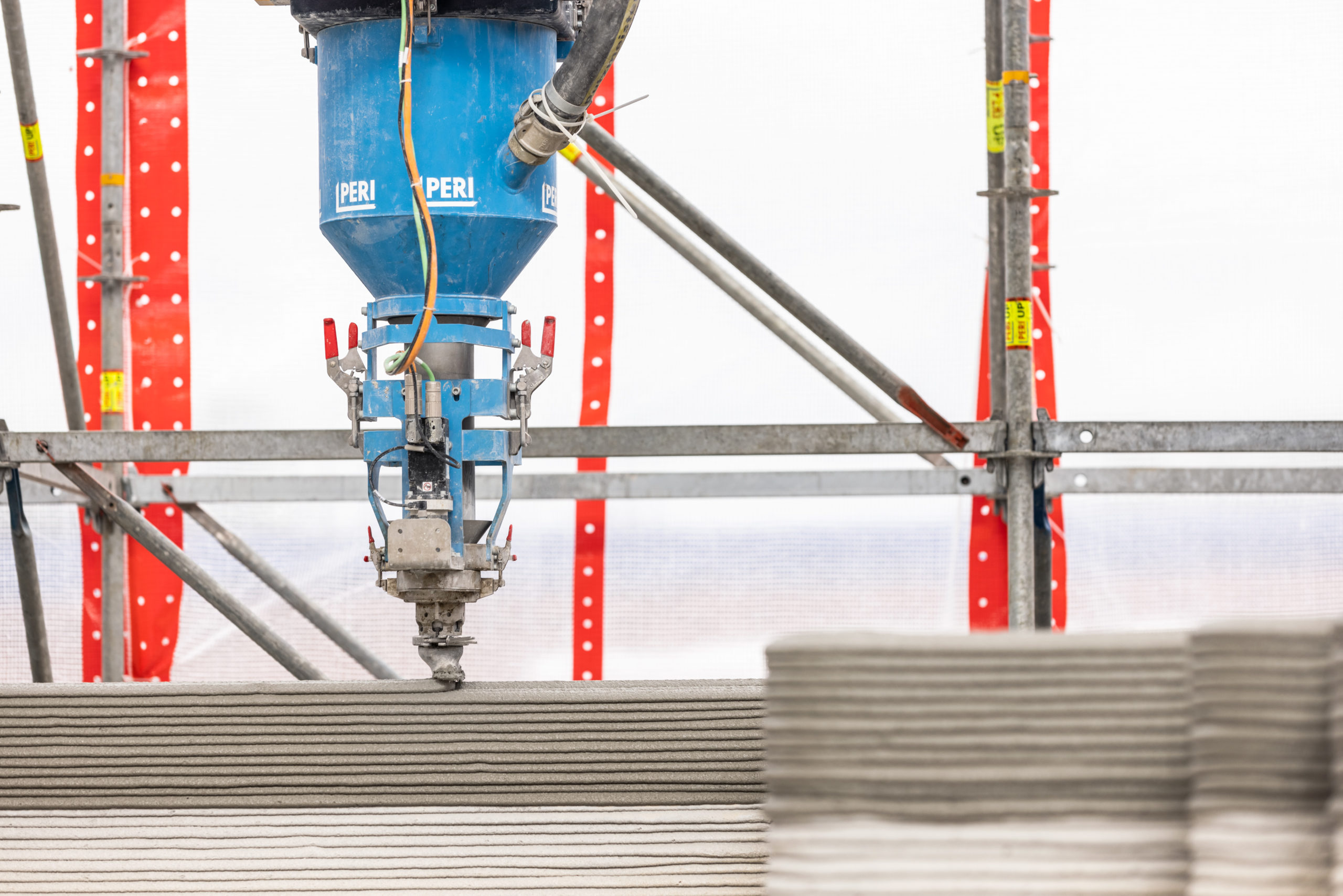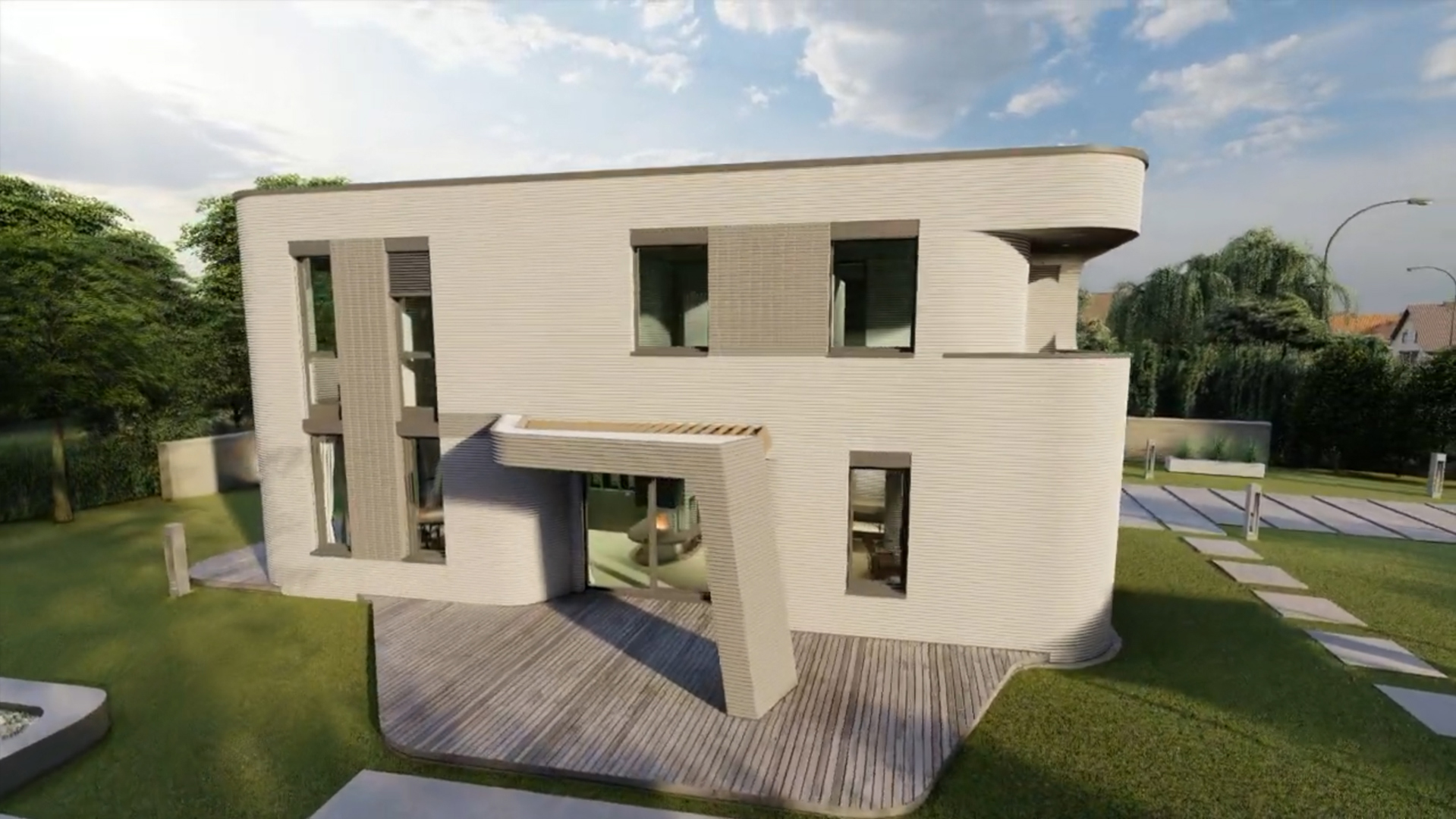Global formwork and scaffolding manufacturer PERI is building Germany’s first 3D printed residential house. Using 3D construction printers from Danish manufacturer COBOD and HeidelbergCement‘s concrete material – designed specifically for 3D printing – PERI is creating a two-story detached house with approximately 80 square meters of living space per floor. Located in the town of Beckum, part of the North Rhine-Westphalia state, the project has demonstrated the potential of additive construction and revealed that COBOD’s technology is ready for the market.
The project received a €200,000 subsidy from North Rhine-Westphalia, which has prioritized 3D printing as the way forward for house building. Local government officials highlighted the importance of supporting the 3D construction project in Beckum as part of its “Innovatives Bauen” (Innovative Construction) development scheme, which already has other projects in the printing loop.
“3D construction printing fundamentally changes the way we build and the process of residential construction. As this is the first building of its kind, we are making a point of printing at a slower rate than what is actually possible,” says Leonhard Braig, Production and Supply Chain Director at PERI. “We want to take the opportunity to gain further experience in day-to-day operations as this will help us to leverage the cost reduction potential of our technology to a greater extent in the next printing project.”

PERI builds the first residential building in Germany using a BOD2 3D printer. Image courtesy of PERI
Additive manufacturing technologies are expected to revolutionize the construction industry, especially as the 3D printing construction market is expected to reach $1.5 billion by 2024. There have been many large scale projects over the years, including residential homes built in a day, entire villages, and more. Particularly centered around the speed at which houses can be 3D printed, many companies have generated a great deal of attention and amazement. Nonetheless, with only a handful of 3D printed buildings for daily use, experts have been cautious, suggesting super fast building constructions have not been realistic to date.
There have been several challenges in 3D construction printing, mainly surrounding materials and machines. However, COBOD has been sending signals that construction 3D printing is growing strong. The company, which started a few years ago as a spin-out of Printhuset and secured the PERI Group as an investor, disclosed profitable financial results for 2019, with orders for its BOD2 construction printer increasing despite the ongoing COVID-19 pandemic. Moreover, the two-story building in Germany follows Europe’s first 3D printed two-story building in Belgium, which was also developed by COBOD for one of its customers, Kamp C, and revealed only a few months ago.
Particularly for this project, PERI relied on COBOD’s BOD2 printing technology. The gantry printer has a print head that moves about three axes on a securely installed metallic frame. The benefit here is that the printer can move along its frame to any position within the construction and only needs to be calibrated once.
According to PERI, the building consists of triple-skin cavity walls, which are filled with an insulating compound. Only two operators are required to run the printer, with both the print head and print results monitored by a camera. During the printing process, the printer takes into account the pipes and connections for water, electricity, and others that are expected to be laid at a later time. At a speed of one meter per second (equivalent to printing 10 tons of concrete per hour), the BOD2 is currently considered by COBOD to be the fastest 3D construction printer available on the market.

PERI builds the first residential building in Germany using a BOD2 3D printer. Image courtesy of PERI
In fact, it only takes the machine around five minutes to complete one square meter of a double-skin wall. PERI has chosen to use a long printer to meet the customer’s needs. For the Bekhum building, PERI is using a BOD2 of 12,5 meters x 15 meters x 7,5 meters. The machine has also been certified to carry out work within the printing area while printing is in progress. So that manual work, such as the installation of empty pipes and connections, can be easily integrated into the printing process.
PERI´s executives described the residential building in Beckum as “a milestone for 3D construction printing technology.” PERI’s Innovation and Marketing Director Thomas Imbacher also highlighted the company’s relevant role as a pioneer and forerunner for this new construction technique, which he believes will become increasingly important in certain market segments in the next decade.
The new construction technique has come through all of the regulatory approval processes over the last few weeks and months. The engineering office Schießl Gehlen Sodeikat supported the development of the concept for obtaining the approval, the planning and execution of the corresponding approval tests were carried out by the Technical University of Munich. Finally, the building was planned by the architectural practice MENSE-KORTE for one of its clients, local architectural designer Hous3Druck.

PERI builds the first residential building in Germany using a BOD2 3D printer. Image courtesy of PERI
“At PERI, we see ourselves as a leading innovator in our markets,” explained Fabian Kracht, Finance and Organisation Director and Spokesperson of the PERI management board. “Investing wisely in start-ups that are offering new solutions in our markets is another aspect of that. 3D printing is a business segment that has emerged from this investment portfolio and has now made its way onto the market. The success story in Beckum is validation that we have taken the right approach.”
As with other industries, the 3D printing process offers designers a high degree of freedom, as well as a quick and cost-effective procedure to create concrete structures, making the procedure an ideal alternative to conventional construction methods. Although only a handful of ambitious initiatives and projects have been attempted, expectations run high, with many companies looking at 3D printing as a key player in the construction industry. PERI and COBOD’s innovative projects open up the potential to additively build large scale creations as the technology continues to progress.
Subscribe to Our Email Newsletter
Stay up-to-date on all the latest news from the 3D printing industry and receive information and offers from third party vendors.
Print Services
Upload your 3D Models and get them printed quickly and efficiently.
You May Also Like
Reinventing Reindustrialization: Why NAVWAR Project Manager Spencer Koroly Invented a Made-in-America 3D Printer
It has become virtually impossible to regularly follow additive manufacturing (AM) industry news and not stumble across the term “defense industrial base” (DIB), a concept encompassing all the many diverse...
Inside The Barnes Global Advisors’ Vision for a Stronger AM Ecosystem
As additive manufacturing (AM) continues to revolutionize the industrial landscape, Pittsburgh-based consultancy The Barnes Global Advisors (TBGA) is helping shape what that future looks like. As the largest independent AM...
Ruggedized: How USMC Innovation Officer Matt Pine Navigates 3D Printing in the Military
Disclaimer: Matt Pine’s views are not the views of the Department of Defense nor the U.S. Marine Corps Throughout this decade thus far, the military’s adoption of additive manufacturing (AM)...
U.S. Congress Calls Out 3D Printing in Proposal for Commercial Reserve Manufacturing Network
Last week, the U.S. House of Representatives’ Appropriations Committee moved the FY 2026 defense bill forward to the House floor. Included in the legislation is a $131 million proposal for...


































